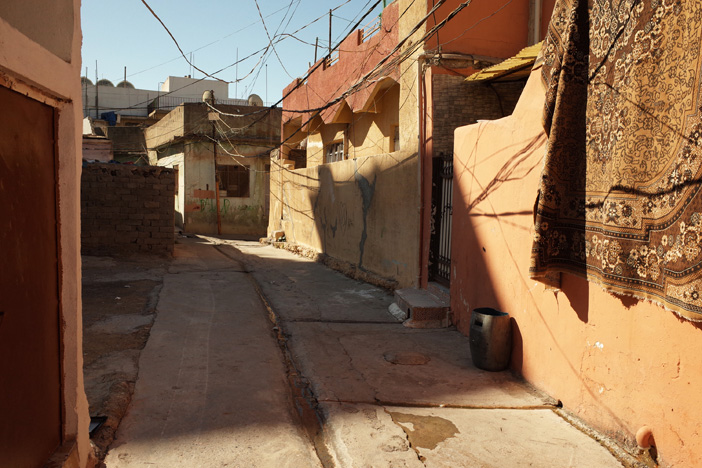
Street in the former Jewish quarter of Zakho in Iraq.
Zakho was once home to the oldest Jewish community in Iraq, which is why the community called their city the Jerusalem of Kurdistan. Today there are no more Jews in Zakho and the houses in the old Jewish quarter are inhabited by Muslim Kurds.
At the beginning of the 20th century, Jews played an important role in Iraq's culture, trade and politics; one third of Baghdad's urban population were Jews, who founded numerous schools and hospitals.
The end of the 2500 year history of Iraqi Jews began 80 years ago on the 1. and 2. June 1941 with the Farhud - a pogrom against Iraq's Jewish community. In 1937, Mufti Mohammed Amin al-Husseini, who had been expelled from Jerusalem, settled in Iraq and established close ties with Nazi Germany. With a mixture of Nazi propaganda and Islamism, he incited the Iraqi Muslims against the Jews. On 1 and 2 June 1941, a Muslim mob marched through Baghdad, killing and raping hundreds of Jews whose houses had been marked. Shops belonging to the Jews were looted and set on fire.
The Farhud represents a key event in the history of Iraqi Jews. Following the Farhud were further attacks and repression of the Jewish community resulting from the rising Arab nationalism and the establishment of the state of Israel.
Many of the 140,000 members of the Jewish Community left Iraq when the Iraqi government passed a law in 1950 allowing Jews to renounce their citizenship and leave the country. This mass exit was organised by the Israeli government via an airlift, known as Operation Ezra and Nehemiah.
The Jews who remained in Iraq continued to be terrorised with arbitrary arrests and executions. Almost all the Jews still remaining in Iraq fled to Iran by 1973, so that by the end of the 20th century there was no longer a Jewish community in Iraq.
What would Iraqi society look like today if the expulsion of Iraqi Jews had not occurred?
<< >>